Fujifilm FinePix F770EXR Review
Fujifilm FinePix F770EXR
Could this be the best travel compact of 2012 so far?
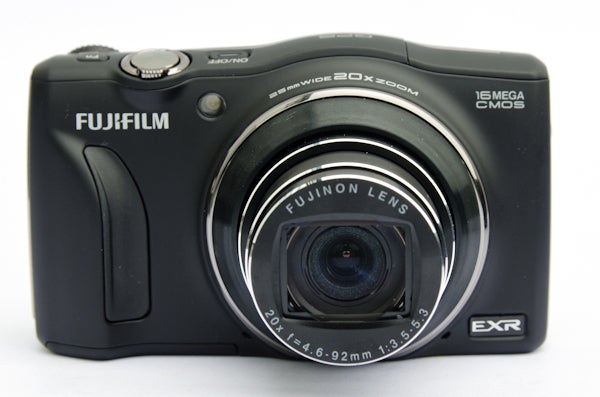
Verdict
Pros
- Competitively priced
- Plenty of useful shooting features
- Stylish and well built
- Can record lossless Raw images as well as JPEGs
- Hi-Def and Hi-Speed movie recording abilities
Cons
- No built-in digital filters
- 'Quick Menu' a bit limited
- Noisy at mid to high ISO settings
Key Specifications
- Review Price: £260.00
- 1/2inch 16MP Fuji EXR CMOS sensor
- 20x optical zoom (equiv to 25-500mm in 35mm terms)
- Lossless Raw sensor data capture
- 1080/30p Full HD movie recording
- 3in, 460k-dot LCD monitor
The Fujifilm F770EXR replaces last year’s F600EXR as the flagship model in Fuji’s travel zoom range. Highlights include a 1/2in 16MP EXR CMOS sensor; the ability to shoot lossless Raw image files; Fuji’s proprietary EXR exposure modes; a range of creative shooting modes, including a one-touch 360-degree Panorama mode; a 20x optical zoom that offers the focal range equivalent of 25-500mm in 35mm terms; plus enhanced GPS functionality and Full HS movie recording at 30fps. 
Given how fiercely competitive the travel zoom market is the F770EXR looks to have most of the bases covered. Indeed the only immediately noticeable omission is the lack any in-camera digital filters. Still, personally we’d rather forgo these in favour of the ability to shoot in Raw – something the F770EXR is virtually alone in offering among its travel compact peers. While the Canon SX260HS, Panasonic Lumix TZ30 and Sony HX20V all offer the ability to skin your images with digital filters, they are all JPEG-only cameras. Does this make the F770EXR the purist’s choice? Lets take a closer look and find out.
At its heart the F770EXR uses a 1/2in EXR CMOS sensor that is ever so slightly larger in surface area than the standard 1/2.3in chips employed by most of its chief competitors. This in itself isn’t that big a deal as the difference is really very small – far more distinguishing is the unique design of the F770’s proprietary EXR sensor. This allows for neighbouring pixels to be combined when required, which essentially enables the F770EXR to increase its signal-to-noise capacity – a major factor when it comes to controlling noise in low-light. It does come at a loss of resolution though, with the F770EXR’s output halved to 8MP.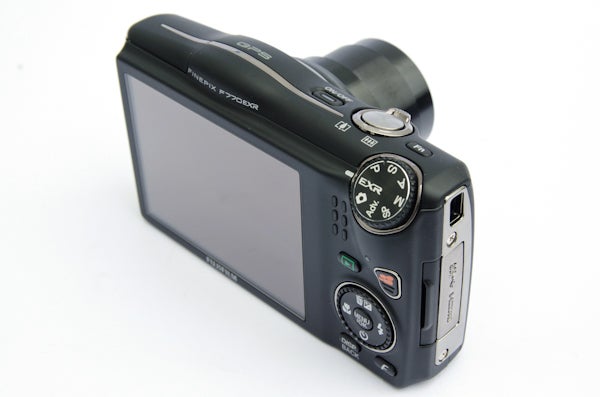
Sensitivity ranges from ISO 100 to 3200 in standard mode with two further settings available, albeit at reduced resolution: ISO 6400 at 8MP and ISO 12,800 at 4MP. In addition, there’s also a High ISO & Low Noise exposure mode available via the EXR menu, which combines pixels in the way described above for enhanced low-light performance. If you’re shooting still subjects then there’s a further mode – Pro Low-Light Mode – that automatically shoots and then combines multiple exposures to limit the effects of noise.
Other useful EXR-specific functions include a D-Range Priority mode that also works by again combining multiple exposures to help out in tricky lighting situations, such as backlit subjects or high-contrast scenes where normally you’d expect to have to sacrifice either highlight or shadow detail. It’s not a perfect solution by any means, but it can certainly help and is a useful feature to have. If light is plentiful and evenly lit then you can also set the camera to prioritise resolution over everything else while its in EXR mode. And finally, if you’re not sure which EXR option is best suited to the scene you’re trying to photograph then thankfully there’s an Automatic EXR option, which lets the camera decide on your behalf. This enables the F770EXR to call on 58 pre-programmed Scene modes and to combine them with the right EXR mode.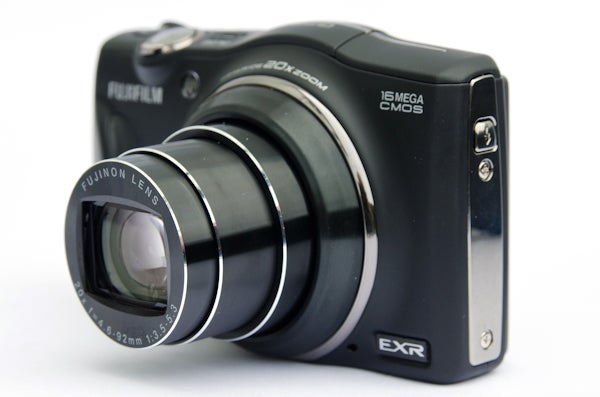
Complementing the EXR modes are a range of Advanced shooting modes that include the aforementioned Pro Low-Light Mode, along with a useful Panoramic mode that enables you to create 120°, 180° and 360° ultra wideangle images in much the same way as Sony’s iSweep Panorama feature works; namely by sweeping the camera in a predetermined direction with the shutter button held down. While the F770EXR lacks the high-resolution option of the recently tested Sony HX20V the results are still pretty good when viewed at regular screen sizes.
Complementing this is a portrait-orientated Pro Focus mode that combines two images for a blurred background effect, a Multiple Exposure mode for overlaying images and a 3D mode. You’ll need a 2D compatible screen for the latter though as the otherwise sharp and bright 3in, 460k-dot TFT LCD monitor on the back of the F770EXR is strictly two-dimensional. Should you want to take more direct control of the F770EXR then you’ll also find the fill complement of Program, Aperture-priority, Shutter-priority and Manual exposure options on the main mode dial, alongside a selection of 18 Scene modes and an Automatic setting.
In addition to still images, the F770EXR can also record 1080p Full HD movies at 30fps, 720p HD movies a 30fps and standard definition 640 x 48 movies at 30fps. Audio is captured in stereo via two microphones underneath the lens, with files stored in the computer-friendly H.264 (.MOV) format. This being a Fuji camera, it comes as no surprise to find there are also a number of high-speed movie options (something Fuji has pioneered with its bridge/superzoom cameras over the years) that play back in slow-motion including: 640 x 480 at 80fps, 320 x 240 at 160fps and 320 x 112 at 320fps. If you’re looking for something to capture fast-moving action and slow it down, the little Fuji has it covered – just so long as you don’t expect to be able to play your slow-motion movies back on a 40in TV at broadcast quality, that is!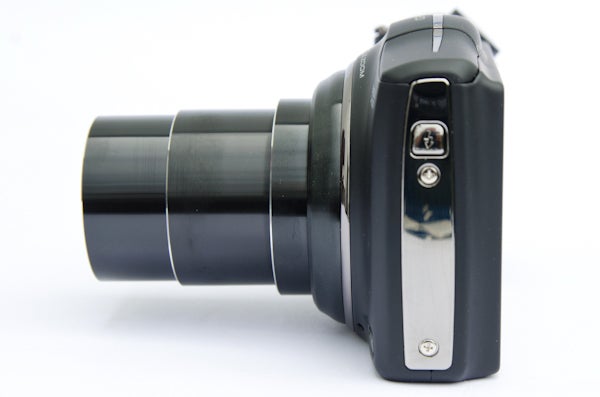
In terms of appearance and design the F770EXR represents something of a departure from most of the other travel compacts on the market. It’s much less angular than its competitors with more rounded edges and ergonomic curves. The outer shell of the camera is given a smooth (yet tough) rubberised finish too, and while it might not be to everyone’s tastes we have to confess that we rather like it. It certainly doesn’t feel in any way cheap or tacky in the hand, rather it feels well considered and quite solidly put together.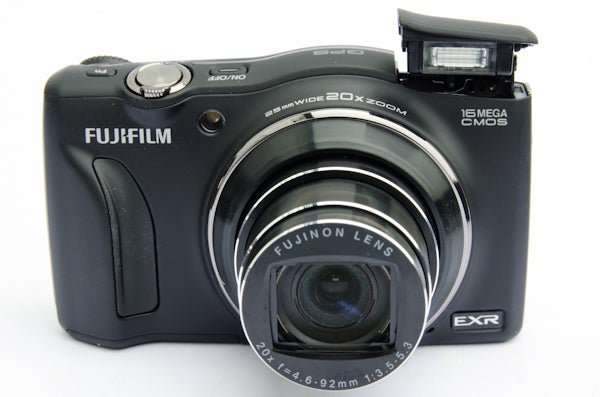
The front is given an ergonomic finger grip that comfortably allows you to brace your middle finger against, with a ridged thumb-rest on the back giving extra purchase. Overall, it’s a very comfortable camera to hold and feels perfectly secure enough to use one-handed. The various buttons and controls are, on the whole, quite well placed too, although the one-touch movie record button sits flush with body, which can make it a bit fiddly to press without the aid of a fingernail. On the plus side, the D-pad is surrounded by a circular wheel, which allows for quicker scrolling when navigating the main in-camera menu.
Another useful button is the F-menu button, which brings up a kind of ‘quick menu’ for easy adjustments to the main shooting settings. The number of options available though the F-menu is a bit limited though, even when using the camera in one of the more advanced ‘PASM’ modes. Somewhat oddly, white balance adjustment and the option to shoot in Raw are both absent from the F-menu too. Thankfully, the F770EXR does get a new Function (Fn) button on top of the camera body, and this can be assigned to a number of things, and although white balance isn’t one of them you can assign it to act as a quick Raw capture button. Aside from these two quirks, we otherwise found the F770EXR very easy to use and navigate our way around.
Initial start-up clocks in at a fraction under 2.5 seconds, which is pretty standard for a camera of this type. Processing times are also comparable to the competition, without being either unduly fast or slow. Used in Single-shot mode, we were able to record six full-resolution JPEGs in 10 seconds, which equates to around 1.6fps. Switching to Raw this drops to around four images in ten seconds, or 2.5fps. 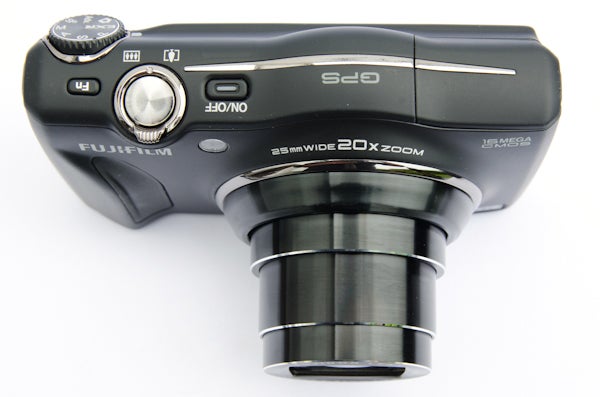
Used in Continuous mode the camera offers a choice of 3, 5, 8 or 11fps, although the 11fps setting is only available at 8MP or less. Also, the maximum number of consecutive images you’ll be able to shoot at each of these speeds is limited by the resolution you are shooting at. For example, at 8MP the camera can only maintain the top speed of 11fps for 11 consecutive images, after which it will slow to a rate closer to 2fps. At the other extreme, knock the resolution right down to 4MP and you’ll be able to shoot at 3fps indefinitely (we gave up counting after capturing 180 shots in a timed minute). Raw capture is another matter altogether though, with the 3fps and 5fps Continuous shooting options both coming to a stuttering halt after about five consecutive frames. All in all though, so long as you stick to shooting JPEGs most users should be able to find a happy medium somewhere.
Autofocus is impressively quick, with the camera finding focus almost instantaneously in good light and only slowing down slightly in more subdued conditions. The front of the camera also gets a bright white LED AF assist light that can help to illuminate nearby subjects in really dark conditions. And of course, there’s a built-in flash to call on too. While AF speed is pretty good, it’s a shame that the available AF modes are limited to Centre, Multi, Continuous and Tracking – a user-defined spot AF focus option would certainly make the camera more flexible. Perhaps that’s something that will come with next year’s model.
Image quality is, on the whole, very good indeed. Used at lower ISO settings and in good light, the F770EXR delivers punchy, vibrant images with good levels of edge-to-edge sharpness and plenty of fine detail. The camera’s built-in image stabilisation technology does its job well too, helping you to achieve sharp images even when shooting handheld at its telephoto extremes. 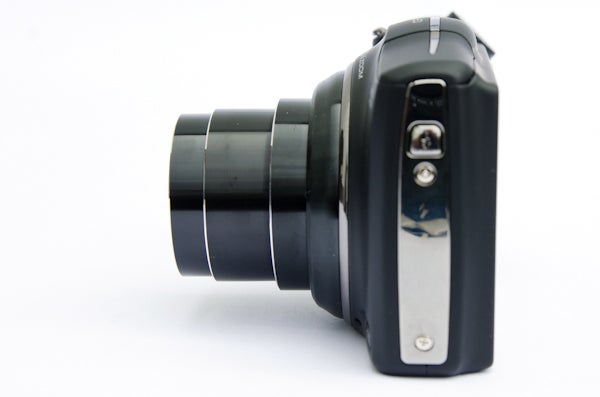
Of course, this being a Fuji camera there are a choice of five Film Simulation colour modes, some of which are named after old Fuji 35mm film stock: Standard, Velvia (vibrant), Astia (soft/muted), Black and White and Sepia. We shot all of our sample images using the Standard setting, which was still able to produce pleasingly vibrant images.
Metering is generally very accurate, although as with most compacts the F770EXR’s metering module tends to favour whatever’s inside the focusing area – even when the camera is set to Multi-point metering mode. This means that in high-contrast scenes a small bit of movement can make a big difference to the result – especially if you are using the camera in Single-point AF mode. That’s not a criticism by any means, although it is something to watch out for nonetheless. Automatic white balance is generally on the money, although when quickly switching between artificial and natural light it can sometimes take some time for the camera to adjust.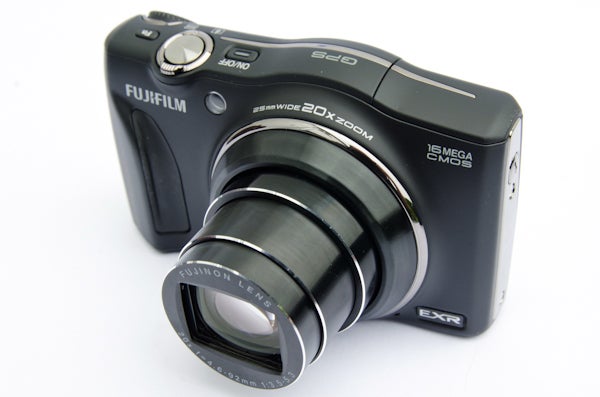
While the lowest sensitivity settings of ISO 100 and 200 produce good results, image quality does deteriorate once you go beyond these two settings. ISO 400 produces quite a bit more noise than ISO 200, although at regular image sizes this really shouldn’t be much of a problem. At ISO 800, however, fine detail begins to take on a smudged appearance, especially in darker parts of the image. By ISO 1600 this has become much more pronounced, with noise becoming much more visible even at regular image sizes. Beyond this things quickly go downhill, with ISO 3200 visibly noisy at all image sizes and the top two settings of ISO 6400 and 12,800 producing very poor image quality indeed and best avoided altogether.
Verdict
The Fujifilm FinePix F770EXR is a generously featured travel zoom that delivers good image quality, especially at lower sensitivity settings. The ability to capture Raw image files is a big bonus too, and something that elevates the F770EXR above its main travel zoom competitors. In addition, the F770EXR’s flexible EXR shooting modes, one-touch panoramic image creation and High-Speed movie recording options are all useful tools that give the camera an extra dimension. Last but not least, the F770EXR is also quite a bit cheaper than its main travel zoom rivals, which makes it very good value too. So, if a small compact with a big zoom is top of your shopping list then the Fujifilm F770EXR is definitely worth a closer look.

ISO 100

ISO 200

ISO 400

ISO 800

ISO 1600

ISO 3200

ISO 6400

ISO 12800
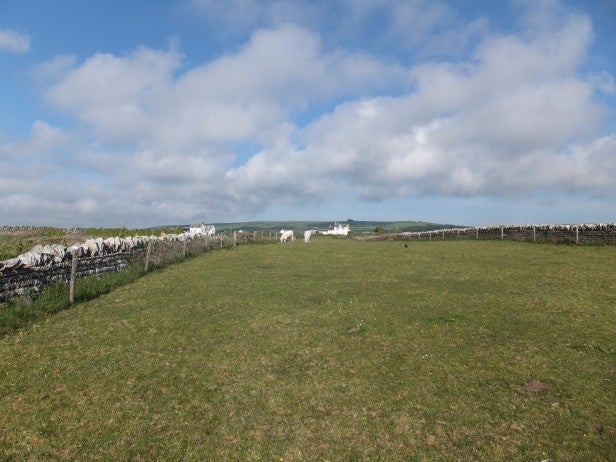
At its widest (25mm) the F770EXR can easily fit a whole field into the frame.
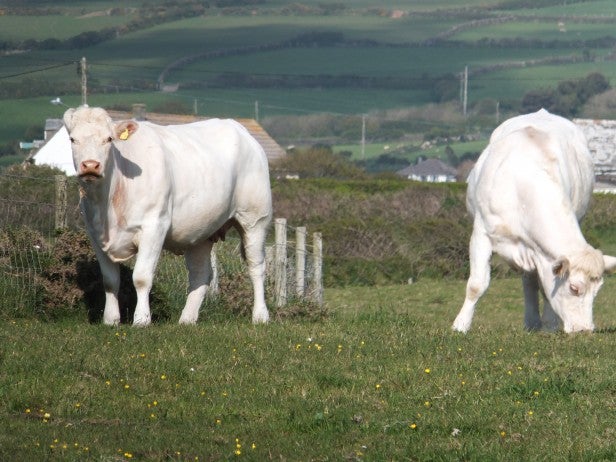
While at 500mm the bulls in the field (see above) can fill the whole frame – and from a safe distance!
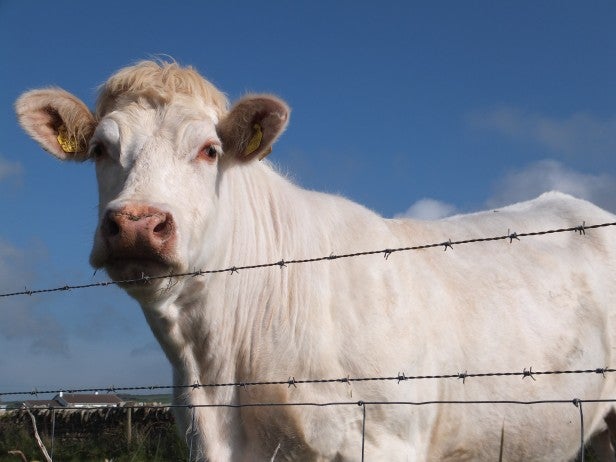
Getting up close (but still safely behind the wire) and the F770EXR has produced a vibrant, punchy image.

At its wider zoom settings and in good light the F770EXR delivers sharp images with good levels of detail.
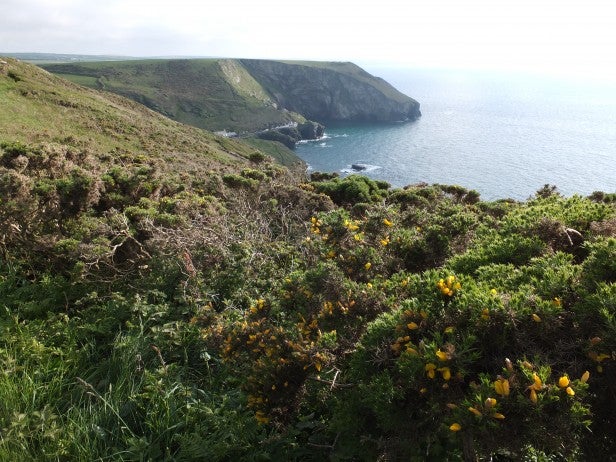
Thanks to the built-in GPS functionality, there’s no way of forgetting where shots were taken.

Trying to get a bit more creative with some backlighting and the F770EXR has just about delivered the image we wanted.

The F770EXR offers a useful Macro mode that lets you get as close as 5cm to your subject.

This 120-degree panoramic was easily created by simply sweeping the camera from left to right.
Trusted Score
Score in detail
-
Value 9
-
Design & Features 9
-
Image Quality 8
-
Build Quality 8

